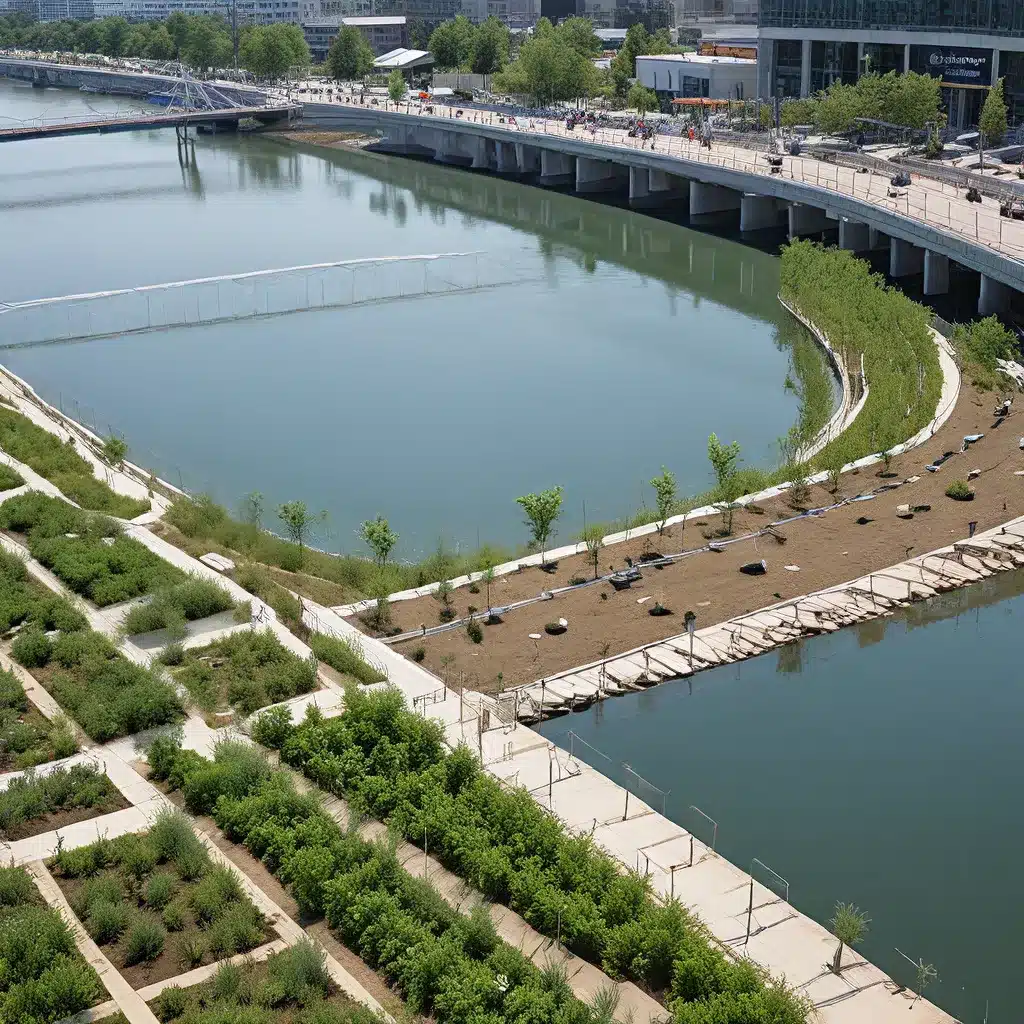
Ah, the great urban planning conundrum – how do we quench the thirst of our ever-growing cities while ensuring the long-term sustainability of our water resources? It’s a challenge that keeps city planners and water management experts up at night, tossing and turning as they ponder the intricate dance between development and conservation.
Embracing the Ecosystem Approach
Let’s face it, the traditional approach to urban water management just isn’t cutting it anymore. The reliance on massive, centralized infrastructure to collect, treat, and distribute water has left many cities vulnerable to the whims of Mother Nature. As climate change continues to throw us curveballs in the form of extreme weather events, it’s time to rethink our strategies.
Researchers suggest that the key lies in embracing a more holistic, ecosystem-based approach to water management. This means integrating green infrastructure, like permeable pavements, green roofs, and bioretention systems, into the urban landscape. By harnessing the natural ability of these solutions to capture, filter, and slowly release water, cities can reduce the burden on their traditional stormwater systems and mitigate the risks of flooding.
Multifunctional Public Spaces
But wait, there’s more! These green infrastructure solutions aren’t just about water management; they’re about transforming the very fabric of our cities. As cities like Vancouver, Melbourne, and Los Angeles have discovered, public spaces like streets, parking lots, and even sports grounds can be designed as multifunctional green infrastructure.
Imagine a soccer field that doubles as a water retention area during heavy rains, or a playground that features rain gardens for stormwater management and outdoor classrooms for environmental education. These innovative approaches not only address localized flooding but also enhance community well-being, increase biodiversity, and improve urban aesthetics. It’s a win-win-win-win situation, and I’m all for it!
Empowering Local Communities
But the real magic happens when we bring local communities into the equation. In low-income neighborhoods, where flooding and access to green spaces are often major challenges, projects like Space to Grow in Chicago are transforming underutilized schoolyards into vibrant, multifunctional spaces. These spaces not only manage stormwater runoff, but they also provide opportunities for outdoor learning, recreational activities, and fostering environmental stewardship.
Imagine the pride and ownership that students and community members feel when they’re actively involved in the design and implementation of these projects. It’s not just about installing a rain garden; it’s about empowering people to become the stewards of their own urban ecosystems. And let me tell you, there’s nothing more inspiring than seeing kids get their hands dirty, learning about the wonders of the natural world right in their own backyard.
Innovative Water Storage Solutions
Of course, the integration of green infrastructure and multifunctional public spaces is just one piece of the puzzle. We also need to get creative with our water storage and distribution systems. The folks at Hamburg Wasser, for example, have come up with an ingenious solution – an underground storage system beneath a stadium that helps prevent flooding during heavy rainfall.
By thinking outside the box and leveraging underutilized spaces, cities can build resilience and enhance the overall sustainability of their water management practices. And let’s not forget the added benefits, like improved urban aesthetics and increased recreational opportunities for the community.
Bridging the Knowledge Gap
But of course, all of this innovation and creativity doesn’t happen in a vacuum. It’s crucial that we bridge the knowledge gap between water management experts, urban planners, and the general public. Research suggests that effective water resource management requires a holistic understanding of the interconnected social, economic, and environmental factors at play.
That’s why I’m thrilled to see organizations like Inland Waters Inc. working tirelessly to educate and empower communities on sustainable water management practices. From specialized training courses to a comprehensive directory of climate solutions, they’re providing the tools and resources needed to transform the way we think about urban water management.
A Future of Fluid Resilience
So, my fellow city-dwellers, let’s embrace the power of green infrastructure, multifunctional public spaces, and innovative water storage solutions. Let’s empower local communities to become active participants in the transformation of their urban environments. And let’s bridge the knowledge gap, sharing our collective wisdom and expertise to create a future where water management and sustainability go hand in hand.
After all, the fate of our cities and the health of our planet depend on it. So, let’s dive in, roll up our sleeves, and get to work on building a more resilient, sustainable, and fluid future for all.


